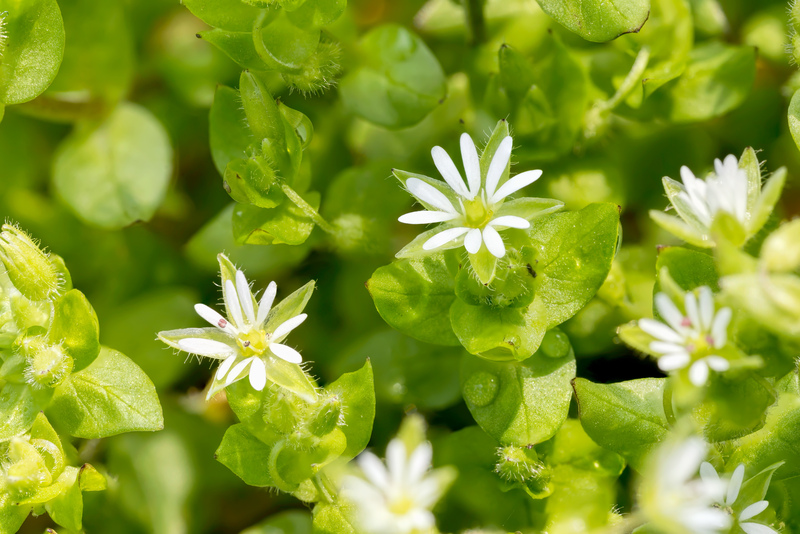Kid-Approved Techniques for Modern Gardens
Posted on 01/06/2025
Kid-Approved Techniques for Modern Gardens
Modern gardening is no longer limited to ornamental lawns or precisely trimmed hedges; it's evolving to become an interactive, enriching environment for the entire family. The trend of kid-approved techniques for modern gardens is reshaping outdoor spaces into dynamic ecosystems that encourage learning, play, and creativity. If you're looking to transform your backyard into a haven where children can have fun while developing valuable skills and a deep respect for nature, then these comprehensive, innovative tips are for you!

Why Embrace Kid-Friendly Gardening?
Gardening with children goes beyond simply planting seeds. It's about fostering curiosity, encouraging responsibility, and nurturing a sense of accomplishment. Modern garden trends incorporate child-centric features and interactive techniques that promote healthy living, environmental awareness, and family bonding. With the right approach, modern gardens become lively classrooms and playgrounds, rolling fun and education into one vibrant landscape.
1. Raised Garden Beds for the Youngest Green Thumbs
Raised garden beds are a versatile and accessible solution for families with children. These beds bring the gardening surface closer to little hands, making it easier for them to participate.
Benefits of Raised Beds in Family Gardens
- Accessible Height: Adjustable heights mean children of different ages and abilities can comfortably help.
- Defined Spaces: Each child can have their own section, fostering ownership and pride.
- Fewer Weeds and Pests: Raised beds often encounter fewer weeds and less soil-borne pests, ensuring the gardening experience remains positive and productive for budding gardeners.
- Creative Freedom: Kids can decorate or personalize their beds with signs, painted stones, or fairy garden elements.
2. Vertical Gardens: Modern, Space-Saving, and Fun
Vertical gardening is a trendy and kid-approved approach that maximizes limited space and introduces new textures to the backyard. Children enjoy both the sensory sensations and the visual appeal of plants growing upwards on trellises, walls, or stacked planters.
How to Create a Vertical Garden With Kids
- Choose Safe Materials: Use lightweight, non-toxic planters.
- Let Kids Select Easy-Grow Plants: Herbs, strawberries, and cherry tomatoes are excellent options.
- Incorporate Artistic Touches: Paint or label planters for extra fun and educational interaction.
- Lesson in Responsibility: Assign watering duties to children, helping them develop routine and accountability.
3. Sensory Gardens: Engaging All the Senses
A sensory garden is a modern garden technique that is particularly kid-friendly, as it incorporates plants and features that stimulate smell, taste, touch, sight, and sound.
Elements to Include in a Kid-Approved Sensory Garden
- Fragrant Plants: Lavender, mint, basil, and rosemary encourage sniffing and touching.
- Edible Flowers and Berries: Nasturtiums, pansies, blueberries, and raspberries excite taste buds.
- Textured Foliage: Lamb's ear, ornamental grasses, and moss add a tactile dimension.
- Colorful Blooms: Vibrant flowers such as marigolds and sunflowers captivate the eyes.
- Sound Features: Wind chimes, rustling bamboo, and water features provide calming, engaging auditory experiences.
4. Edible Gardens: Learning Through Tasting
One of the most exciting kid-approved gardening techniques is growing fruits, vegetables, and herbs at home. Kids are more likely to try (and love!) healthy foods if they've helped nurture them from seed to plate.
Easy Crops for Children to Grow
- Sunflowers: Towering and fast-growing, they are impressive for all ages.
- Cherry Tomatoes: Quick to mature and fun to pick.
- Snow Peas and Green Beans: Sweet, crunchy, and productive with minimal effort.
- Radishes and Carrots: Fast-growing with a big reveal at harvest time.
- Herbs: Basil, chives, and mint for sensory exploration and culinary adventures.
Make it a tradition to cook or snack together in the garden. Children who grow their food are often adventurous eaters!
5. Pollinator-Friendly Gardens: Attract the Wonders of Nature
Including pollinator-attracting plants is a hallmark of modern gardening techniques designed for kids. Watching butterflies, bees, and ladybugs up close inspires curiosity, respect for wildlife, and an understanding of ecological balance.
Plant Choices for Pollinators
- Milkweed: Essential for monarch butterflies.
- Bee Balm, Coneflower, and Black-Eyed Susan: Vibrant and perfect for attracting bees and butterflies.
- Native Wildflowers: Choose species suited to your climate to support local pollinators.
- Flowering Herbs: Thyme and oregano provide food and fragrance.
Adding a bug hotel or butterfly house gives kids extra excitement, offering a close-up look at beneficial insects and their homes.
6. Play Zones: Blending Fun and Flora
Integrating play spaces into a garden--like fairy gardens, mud kitchens, or obstacle courses--keeps children engaged for hours. Kid-approved garden techniques make it possible to blend nature exploration with active play right in the backyard.
Creative Play Ideas for Modern Gardens
- Fairy or Dinosaur Gardens: Small figurines and miniature landscapes spark storytelling and creativity.
- Mud Kitchen: Encourage sensory, imaginative play with water, soil, and "garden ingredients."
- Climbing Structures: Living teepees made from pole beans or sunflowers offer natural shade and a sense of adventure.
- Balance Beams and Stepping Stones: Create natural obstacle courses using logs, stones, or recycled materials.
7. Eco-Conscious Practices for Young Gardeners
Modern, child-friendly gardens double as platforms for teaching sustainability. Involve kids in eco-responsible practices and they'll learn the importance of caring for the earth.
Simple Ways Kids Can Help the Planet
- Composting: Turn kitchen scraps into garden gold! Let kids be in charge of turning or collecting compostables.
- Rainwater Harvesting: Use decorated barrels and encourage watering with captured rainwater.
- Minimize Chemicals: Opt for organic fertilizers and non-toxic pest control methods--let kids help mix or apply natural solutions.
8. DIY Garden Projects for Kids
Hands-on projects are perfect for getting children excited about gardening. These activities offer educational value and endless hours of entertainment:
Kid-Approved DIY Garden Projects
- Seed Tape Creation: Teach spacing and sowing with homemade seed tape using toilet paper and paste.
- Painted Plant Markers: Personalize with rocks, wooden spoons, or recycled materials.
- Birdfeeders and Bee Baths: Craft simple feeders or water dishes to welcome garden visitors.
- Upcycled Planters: Convert old boots, tin cans, or kitchen containers into quirky, custom planters.
9. Technology in the Modern Family Garden
Modern gardens for families can blend the best of nature and technology for learning and engagement. Educational apps, solar-powered garden lights, and interactive sensors can inspire the next generation of eco-tech enthusiasts.
Ways to Integrate Technology in Child-Friendly Gardens
- Gardening Apps: Use apps to track plant growth, learn about various species, and set handy reminders.
- Solar Lights: Let kids design nighttime pathways with cool shapes and colors powered by the sun.
- Weather Stations: A small weather station helps kids monitor rainfall, sunlight, and temperature trends.
- Time-Lapse Cameras: Document the growth of plants or the arrival of pollinators, then share the results as a family.
10. Year-Round Kid-Involvement
Modern gardens can be enjoyed in every season. Extend your family gardening adventures with indoor grow kits, windowsill herbs, and terrariums in the winter months.
Season-Appropriate Activities
- Spring: Seed starting, planning garden layouts, and cleaning up beds together.
- Summer: Watering, harvesting, observing pollinators, and hosting backyard picnics.
- Fall: Leaf crafts, preserving harvests, and preparing gardens for winter with mulch or cover crops.
- Winter: Grow lights and hydroponics indoors, seed catalog exploration, and garden craft projects.

Safety Tips for Kid-Approved Gardens
While gardening with children is rewarding, child safety in the garden is paramount. Here are essential guidelines:
- Avoid Toxic Plants: Steer clear of species that are harmful if ingested or cause skin irritation.
- Supervise Tool Use: Provide child-appropriate tools with rounded edges and lightweight designs.
- Encourage Handwashing: Teach children to wash hands after gardening, especially before meals.
- Sun Safety: Ensure sunscreen, hats, and shading are available for young gardeners.
Conclusion: Growing Modern Gardens and Young Minds Together
Kid-approved techniques for modern gardens are about creating spaces that foster learning, responsibility, health, and joy. By integrating interactive features such as raised beds, vertical gardens, sensory experiences, play zones, and eco-conscious practices, you can transform your family's outdoor space into a place where memories blossom along with the flowers. Gardening alongside children in today's world means cultivating not just plants, but also wonder, resilience, and a lifelong appreciation for the natural world.
Let your modern garden become a living legacy of growth, curiosity, and connection--for your children and generations to come!

